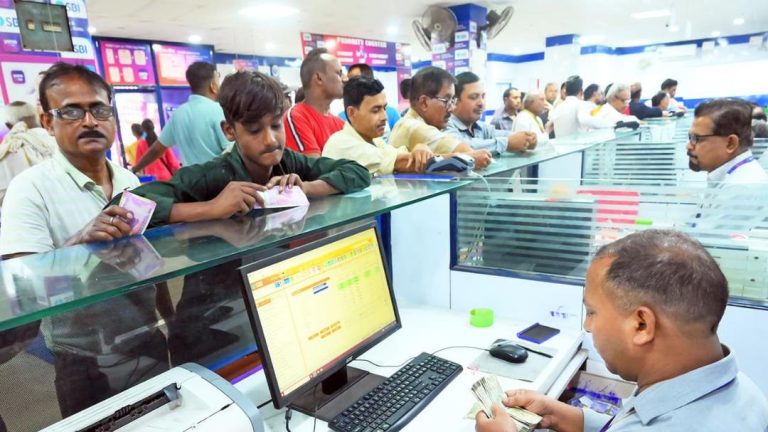
RBI’s Government Securities Holdings Jump to 14.2%: SBI Report
The Reserve Bank of India’s (RBI) share in government securities has witnessed a significant surge, reaching 14.2% in June 2025, up from 11.9% last year, according to a recent report by the State Bank of India (SBI). This notable increase in the central bank’s holdings of government securities has sparked interest among market observers, who are keen to understand the implications of this development on the bond market and the overall economy.
The SBI report highlights that the RBI’s increased holdings of government securities have been accompanied by a reduction in exposure by banks. This shift in the ownership pattern of government securities is a crucial aspect of the bond market, as it can influence bond yields and liquidity in the market. Meanwhile, insurance companies have maintained a stable level of holdings in government securities, providing a sense of continuity in the market.
The increase in the RBI’s government securities holdings can be attributed to the central bank’s efforts to manage liquidity in the market and maintain stability in the bond yields. With heavy central and state government borrowings on the horizon, the RBI’s move to increase its holdings of government securities is seen as a strategic step to prevent a sharp rise in bond yields. The central bank’s actions are aimed at ensuring that the bond market remains stable and that the government’s borrowing program is executed smoothly.
The RBI’s interventions in the foreign exchange market have also had a significant impact on the liquidity situation in the market. The central bank’s efforts to manage the exchange rate have resulted in a tightening of liquidity, which has prompted the RBI to undertake fresh Open Market Operations (OMO) to inject liquidity into the market. The OMOs are a tool used by the central bank to manage liquidity in the market, and they involve the purchase or sale of government securities to influence the money supply and interest rates.
The implications of the RBI’s increased holdings of government securities are far-reaching and can have a significant impact on the bond market and the overall economy. The surge in the RBI’s holdings can lead to a reduction in the supply of government securities available to other market participants, such as banks, insurance companies, and individual investors. This reduction in supply can result in higher bond prices and lower bond yields, making it more expensive for the government to borrow.
On the other hand, the reduction in banks’ exposure to government securities can lead to an increase in their lending to the private sector, which can have a positive impact on economic growth. The stable holdings of government securities by insurance companies can provide a sense of continuity and stability in the market, which is essential for maintaining investor confidence.
The outlook for the bond market remains uncertain, with bond yields expected to stay rangebound in the near term. The heavy central and state government borrowings ahead are likely to keep the bond market under pressure, and the RBI’s interventions in the foreign exchange market can continue to influence liquidity in the market. However, the central bank’s commitment to maintaining stability in the bond market and ensuring the smooth execution of the government’s borrowing program is expected to provide a sense of comfort to market participants.
In conclusion, the RBI’s increased holdings of government securities, as reported by the SBI, are a significant development in the bond market. The implications of this surge are far-reaching, and market participants will be keenly watching the central bank’s future actions to gauge the impact on the bond market and the overall economy. As the bond market navigates the challenges ahead, the RBI’s interventions will play a crucial role in maintaining stability and ensuring the smooth execution of the government’s borrowing program.





